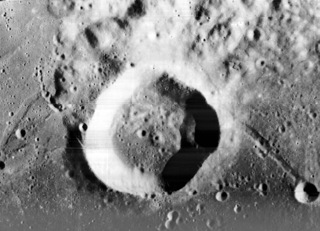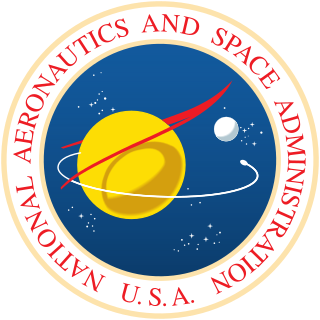
Mercator is a lunar impact crater that is located on the southwestern edge of Mare Nubium, in the southwest part of the Moon. It was named after 16th-century Southern Dutch cartographer Gerardus Mercator. It is located to the southeast of the crater Campanus, and the two are separated by a narrow, winding valley.

Agatharchides is a lunar impact crater located at the southern edge of Oceanus Procellarum, in the region between the Mare Humorum and Mare Nubium. To the east-southeast is the crater Bullialdus, and to the south-southwest lies Loewy. It is named after the Greek geographer Agatharchides.

Appleton is a heavily eroded lunar impact crater that lies in the northern hemisphere on the far side of the Moon. To the northwest are the craters Von Neumann and Campbel. The smaller Golovin lies to the northeast, while further to the southwest is the Mare Moscoviense.

Baillaud is a lunar impact crater that is located near the north limb of the Moon. The rim of the crater has been eroded and worn by a long history of impacts, leaving a hilly ridge surrounding the interior. The crater Euctemon is intruding into the rim to the northeast, and the rim bulges outward to the northwest. At the south end of the crater is a gap connecting to the lava-flooded surface to the south.

Barrow is an old lunar impact crater that is located near the northern limb of the Moon. It lies between the crater Goldschmidt to the northwest and the irregular formation Meton to the northeast. To the southwest is W. Bond.
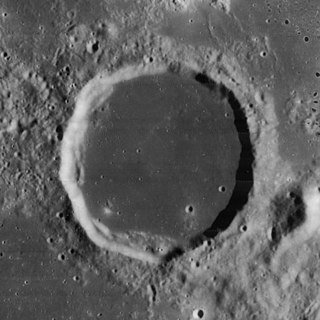
Billy is a lunar impact crater that is located at the southern fringes of the Oceanus Procellarum, in the western hemisphere of the Moon. It was named after French mathematician Jacques de Billy. It lies to the southeast of the similar-sized crater Hansteen, and west-southwest of the flooded Letronne.

Boyle is a lunar impact crater that is located in the southern hemisphere on the rugged far side of the Moon. It is adjacent to the larger crater Hess to the southeast, and lies about midway between the craters Alder to the north-northeast and Abbe to the south-southwest.

Doerfel is a lunar impact crater that is located in the vicinity of the southern pole, just on the far side of the Moon. It lies approximately midway between the large crater Hausen to the east-northeast and the even larger Zeeman to the southwest.

Fizeau is a prominent lunar impact crater that is located on the far side of the Moon, in the southern hemisphere. Nearby craters of note include Minkowski to the west-northwest, and Eijkman to the southwest.

Chamberlin is a lunar impact crater that is located on the far side of the Moon, just past the southeastern limb. It lies to the southeast of the crater Jeans, and Moulton is attached to the southeastern rim of Chamberlin. This crater is located in a part of the lunar surface that has undergone resurfacing of crater interiors, producing dark-hued crater floors.

Bellinsgauzen is a lunar impact crater that lies in the southern part of Moon, on the far side from the Earth. It is attached to the northern rim of the larger crater Berlage, and within a half crater diameter of Cabannes to the west. North of Bellinsgauzen is the crater Bhabha.
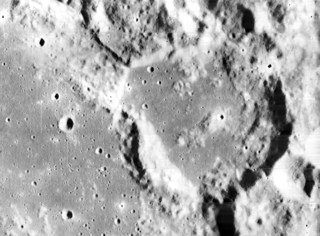
Condon is a lunar impact crater that lies on the eastern shore of the Sinus Successus, a bay along the northeast edge of Mare Fecunditatis. It was named after American physicist Edward U. Condon. It lies midway between the larger crater Apollonius to the north and the smaller Webb to the south on the Mare Fecunditatis. Condon was previously designated Webb R.
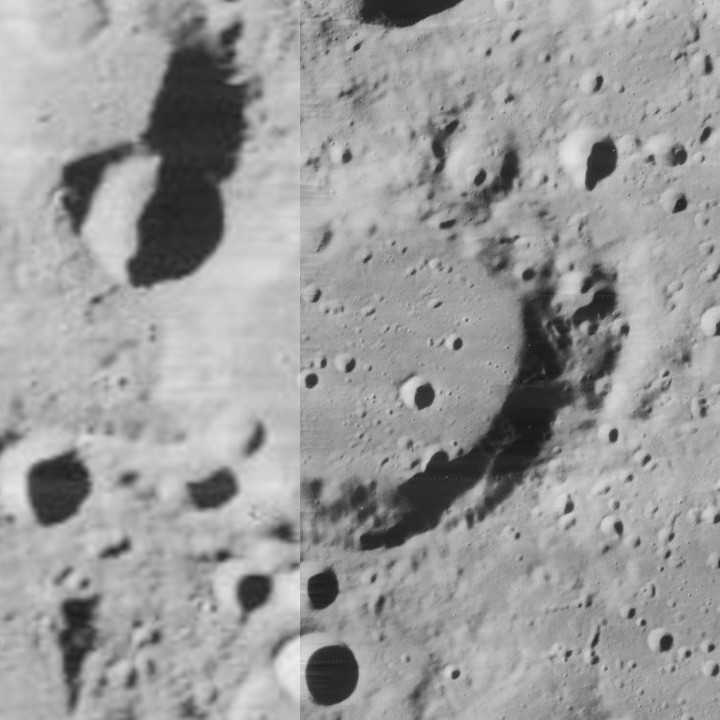
Cleostratus is a lunar impact crater near the northwest limb of the Moon. It lies to the northeast of the crater Xenophanes, and west-southwest of the prominent Pythagoras. From the Earth this crater appears highly elongated due to foreshortening.

Dyson is a lunar impact crater, 63 kilometers in diameter, that lies on the far side of the Moon, past the northwest limb. It is located in the northern part of the surface, to the northwest of the crater Coulomb, and east of van't Hoff.
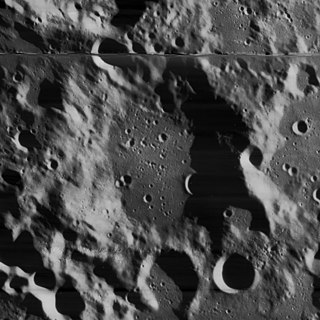
Wilson is a lunar impact crater that lies in the southern part of the Moon's near side, to the southwest of the large walled plain Clavius. It is nearly attached to the southeastern rim of the slightly larger crater Kircher. Almost due east lies Klaproth, another walled plain.

Donner is a lunar impact crater on the far side of the Moon. It is located just to the northeast of the Mare Australe, behind the southeastern limb of the Moon. During favorable librations this part of the lunar surface can be brought into view of the Earth, but the site is viewed from the edge and so not much detail can be seen.

Dreyer is the remnant of a lunar impact crater on the far side of the Moon. It is located along the eastern edge of the Mare Marginis, about midway between the craters Ginzel to the north and Erro to the south-southeast. It was named after Danish-Irish astronomer John L. E. Dreyer.

Lebedev is a crater on the far side of the Moon. It is located at the eastern edge of the irregular feature known as Mare Australe. The crater lies to the southeast of the larger, flooded Lamb, and to the east-northeast of Anuchin. To the southeast of Lebedev lies the smaller crater Cassegrain.
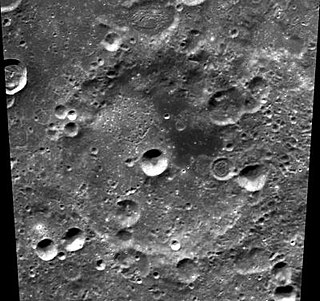
Minkowski is a crater on the far side of the Moon, in the lower latitudes of the southern hemisphere. The lunar crater lies about one crater diameter to the north-northeast of crater Lemaître, a formation of similar dimension. To the northwest of Minkowski is the flooded crater Baldet, and to the southeast lies Fizeau.

Popov is a crater on the far side of the Moon, just beyond the eastern limb. It measures approximately 71.4 kilometers in diameter and is located along the very edge of the area of surface that is sometimes brought into view of the Earth during periods of favorable libration and illumination. However even at such times it is not prominent and can only be viewed edge-on.

